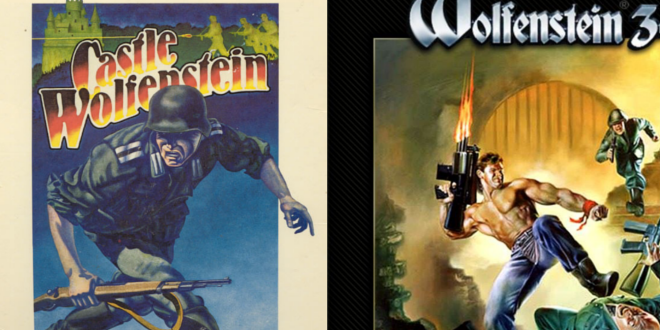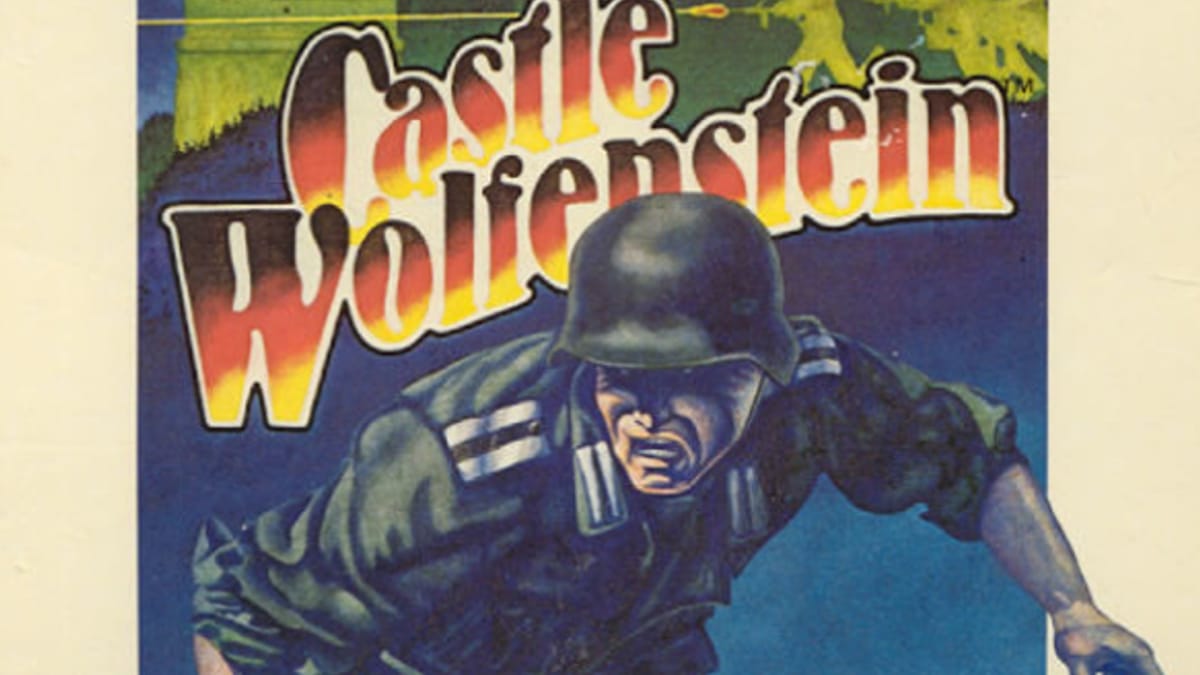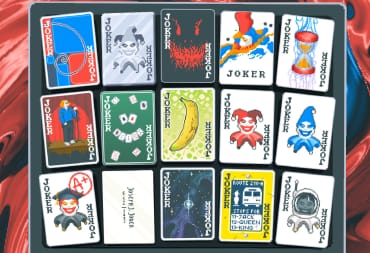Sometimes you never know what will make a game franchise stick. After all, it’s doubtful anyone actively tries to franchise games right out of the bat; such hubris often leads to major problems, especially if the game is unsuccessful. Other times, it takes a massive leap in style and gameplay to truly find its footing, where it becomes rooted as the norm for all members of the gaming community.
We have this happen time and again with many franchises, both positively and negatively. After all, Metal Gear had to morph into Metal Gear Solid, while Sonic should have stuck to running fast over turning into a werewolf. Perhaps one of the most famous examples, however, is the massive change between a video game classic, the Wolfenstein series. After all, the first game, Castle Wolfenstein, is now 35 years old, but the Wolfenstein everyone knows, of course, is the 3D counterpart released in 1992.
Wolfenstein 3D was an innovative game for its time. Ushering in a smooth, first-person perspective and, for its time, impressive 3-D environments using only 2-D sprites, Wolfenstein 3D by id Software became a cornerstone in gaming lore—the effective proto-first-person shooter. Doom of course followed suit, and the rest, as they say, is history. Since then, Wolfenstein has been primarily an FPS series, with iterations popping up every so often, continuously evolving into a more modern shooter each time.

What about Castle Wolfenstein though? For all intents and purposes, the game has been somewhat forgotten, possibly because of how radically different it was from the 3D counterpart. Castle Wolfenstein, however, had several firsts of its own to claim; it was the first game to use World War II as a backdrop, and one of the first games to utilize stealth-based gameplay. In a complete 180 from the design of Wolfenstein 3D, combat was a strategic exercise, instead of the focus because of the scarcity of ammo as well.
All of this boiled down into a different game, one that has been lost to time except for retrospective articles like this. When it was first released in 1981 on the Apple II, it is doubtful the development team of Muse Software, nor the creator of Wolfenstein, Silas Warner, could ever imagine the success of their franchise. It is a success, sadly, neither would share in for long.
The basic concept of Castle Wolfenstein came from Warner, a 6’ 9’’, nearly 300-pound programmer at Muse Software, who for all intents and purposes made the game on his own. Warner penned the script, programmed the title, and even worked on the game's sound design, including digitized voices for German soldiers, a novelty in 1981. It was a very auteur-styled development process, one where Warner controlled almost every aspect of the shaping of Castle Wolfenstein.
It shows as well. Castle Wolfenstein is not in 3D, but rather a top-down perspective action perspective similar to famous arcade games at the time, such as Berzerk and Robotron: 2084. The emphasis on stealth is paramount mostly to your own equipment - you need to scavenge for bullets and other supplies throughout the game to simply survive. Bullets, keys, grenades, and other items become the main sources of espionage in your quest to traverse the lair of Wolfenstein. Some are for novelty's sake, like finding Schnapps or wine that, when consumed, causes you to not shoot straight for a short period of time. Other objects, like German uniforms, allow you to sneak past guards without killing them.
The game also had a simple objective: steal war plans in the castle and escape alive, in and out as quickly as possible. Due to this simplicity, Warner included a ranking system, which provided eight levels of difficulty based on your performance and completion of this objective. So players would start as private but can rise through the ranks to field marshal for successful mission attempts.
Because the castle itself contains 60 different rooms, each time a player plays, the guards and chest locations warp to different areas in these rooms. It is not fully procedurally generated, however; it is possible to map out the entire castle in a single sitting and utilize that map for another mission, but the randomness of the guards and chests add to the replay value of the game in a way that was unusual in 1984.
One of the more interesting gameplay mechanics is the fact that you can go through the majority of the levels without firing a shot. In stark contrast to Wolfenstein 3D, where gunplay was paramount to the whole experience, Castle Wolfenstein followed a different tact by having German soldiers surrender to you if you get the drop on them. You can then strip them of their ammo and keys, and leave them there if you wish. Or, simply kill them and run off. It is a simple mechanic, but it is one that offers a nice degree of choice that is rarely seen outside of RPG or text-adventure games at the time; it is gameplay decisions that determine the experience the player has in Castle Wolfenstein, adding to the replayability of the title.
Critics at the time had high reviews for the title, praising the ideas and underlying complexity, as well as the sound design, as digitized voices were practically unheard of on personal PCs in 1981. Most criticisms for the game actually came from the numerous other machines, notably the Commodore 64 and the Atari 8-bit, at the time, as they were developed after Castle Wolfenstein was released.
The success of the game on the Apple II led to Castle Wolfenstein winning the Electronic Games Certificate of Merit in the “Computer Game of the Year” category during their 4th annual Arkie Awards and spurred Muse Software and Warner to create a sequel, Beyond Castle Wolfenstein, released three years later in 1984.
The sequel upped the stakes by having the player attempt to assassinate Adolf Hitler, in a recreation of the famous 20 July Plot, also known as Operation Valkyrie. The sequel retained most of the same gameplay and ideas and expanded on it by adding some upgrades and mechanics, and a new goal. Unlike the first game though, Beyond Castle Wolfenstein was met with a more mixed reception. In that three-year period, games already began to change, and the impressive technology of Castle Wolfenstein started to look old in comparison to the new cutting edge of 1984, a year in which gaming was on the cusp of its growing popularity through 8-bit graphics.
Another problem was more devastating: the computer gaming market was beginning to stagnate. With the onset of game consoles, PC gaming became a niche in software development, and personal computers such as the Apple II were still high-tech, high-cost machines. While by 1984 gaming in general was in a massive slump, the PC market suffered heavily with slow sales and growth and would continue to do so well into the 1990s.
Muse Software would not see the end of the decade, becoming a casualty of this downtime in gaming history. The company faced major financial troubles, going from, at its peak, a team of 40 employees in 1983 to only six within the course of two years. After filing for Chapter 7 bankruptcy in 1985, Muse would officially close their doors in 1987.
Warner, for his part, would leave Muse around that time and join MicroProse, a software company that housed famous PC programmers Sid Meier, Jeff Briggs, and “Wild” Bill Stealey. What happens to Warner after this is sadly unclear, as he falls from obscurity. His last major game credit was as a designer for The Terminator in 1993. Sadly, Warner passed away in 2004 at the age of 54, from complications with diabetes and kidney disease. To honor his memory, his widow released the source code for Beyond Castle Wolfenstein to the gaming public for free
The long history of Wolfenstein is definitely what one would not expect, in particular, because of the nature of the game's origins being a completely different experience from the id Software titles. This is not to say one is better than the other, but it is proof that sometimes the evolution of a video game franchise can go in wild directions that no one, even the creators, would have anticipated. Castle Wolfenstein may not be a game thought of, let alone remembered, by the general gaming public, but if nothing else, Castle Wolfenstein is a major game changer for being the grandfather to its most famous contribution, the birth of the first-person shooter.
This post was originally published in 2016 as a part of our Game Changers series. It's been republished to have better formatting.
Have a tip, or want to point out something we missed? Leave a Comment or e-mail us at tips@techraptor.net













